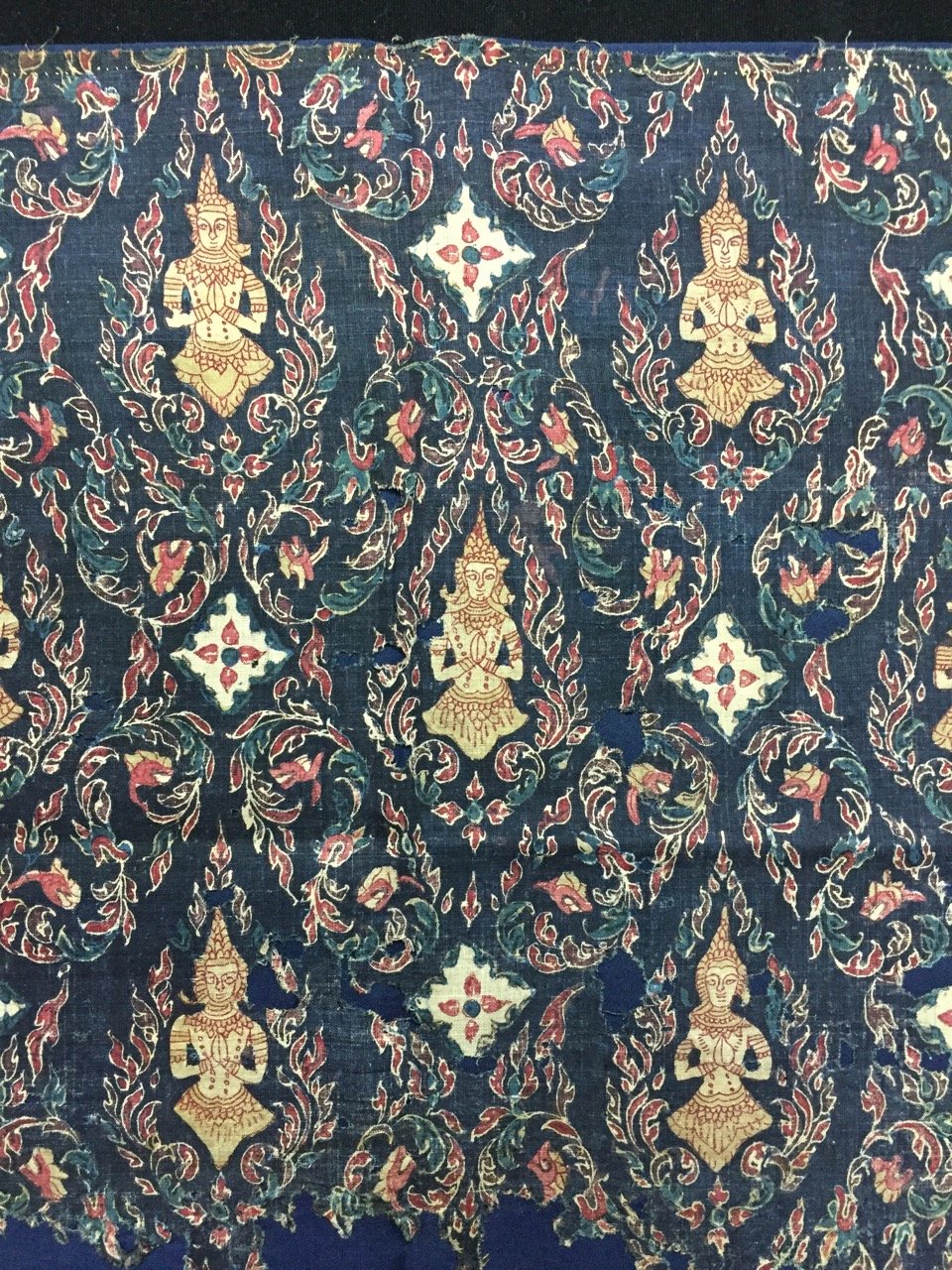
Upcoming and past
Events
The Thai Textile Society invites you to join a very special visit to see the fine collection of Southeast Asian textiles at Tilleke & Gibbins. This law firm, founded in 1890, has a long history as a leader in the field of law in Thailand. In addition of providing excellent legal services, the law firm has developed two outstanding museums, the Museum of Counterfeit Goods, and the Textile Collection.
The textile collection that began as office decoration in 1987, now showcases over 2,000 selected pieces from different regions and ethnic groups in Thailand and Southeast Asia, evidence of Tilleke & Gibbins’s support of local cultures by bringing together, preserving and displaying fine examples of these diverse Southeast Asian traditions.
The program will include a tour of the office area where textiles from the collection are currently on display, and viewing selected pieces from various Tai groups from Thailand and Laos. The curator will discuss the distinctive characteristics of each group and its weaving techniques.
The collection curator, Wipawee Tiyawes, has worked at this capacity at Tilleke and Gibbins for a number of years, and has also served on the committee of the Thai Textile Society. She will share her experience and knowledge on this upcoming visit.
Sop Moei textiles are woven by the Pwo Karen, a sub-group of the larger Karen hill tribe who live in remote villages in Mae Hong Son Province, at the confluence of the Moei and Youm Rivers. Isolated for years, their story unfolds like a fairytale. It began with Kent Gregory, a child of missionaries born in Thailand. Having been educated in public health, he ventured to the remote area to help the villagers, but he soon realized that money was needed to improve their living conditions. To generate funds for the villages, Kent began marketing the textiles and baskets that were woven locally, selling them in Bangkok where they fetched a higher price. Over the years the quality of the materials improved as new and attractive designs emerged. Today, Sop Moei is well known in Thailand with a shop that helps sustain the Pwo Karen.
Masako Isomura began working with Sop Moei Arts as a marketing volunteer in 1997. She is currently involved in its marketing activities and manages the Bangkok shop, trains staff and volunteers, while giving feedback on product design and development. She will talk about the history of the project and the Karen villagers accompanied by many visuals, as well as the way the project is run, and how the designs are used to create unique and original products. There will be a variety of products on display and for sale. A trip to the Karen village is planned for November.
This month, John Ang coming especially from Kuala Lumpur, will speak about the intricate weaving of the Cham communities in Vietnam and Cambodia. In his talk, he will unravel the intricate history of the Cham communities spread across Vietnam, Cambodia, Hainan, the Philippines, Malaysia, and Indonesia. He will illustrate how their traditions have profoundly influenced and shaped the aesthetics of textiles in these regions. Through mapping ancient trade routes and exploring the interwoven connections among these nations, John will shed light on the Chams' pivotal role in the development of our shared civilization.
John’s fascination with Cambodia began at the age of 13, inspired by its architecture, dance, and sculpture. During his MA studies in Art History at the University of Michigan, he deepened his understanding of Cambodian culture through a course on its architecture, which led to his first visit to Angkor. This experience sparked his interest in Cham textiles and their connections to Malay textiles within his collection, igniting a passion for the subject, fostering enduring friendships with members of the Cham community. An American-Chinese with Singaporean roots, John now resides in Kuala Lumpur. A passionate collector of textiles—particularly those from the Malay world—he is eager to share his insights into the Cham culture and its profound connection with Malay traditions, as reflected in their shared textile heritage. John will further enlighten us with actual examples of Cham and Malay textiles from his collection.



